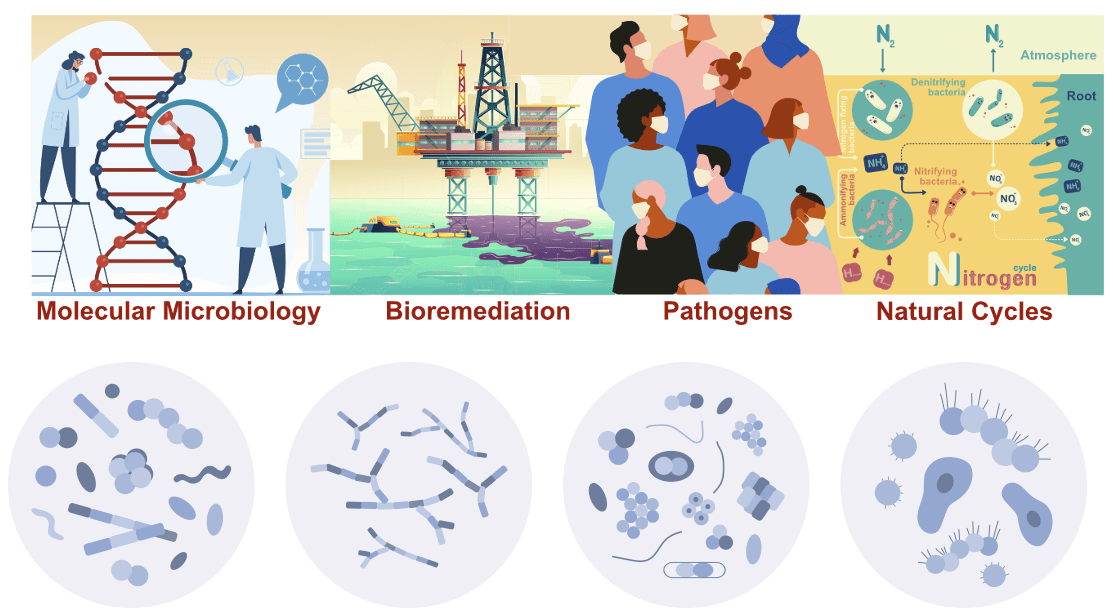CEE 4215/6215: Stochastic Modeling of Complex Systems
The molecular components of a cell, mobile genetic elements in a microbial community, and individuals within a population often operate and live in noisy environments. What are the sources of stochasticity in these systems, and how does such stochasticity affect their dynamics? In this class, we review the fundamentals of the theory of stochastic processes through examples taken from cellular and molecular biology, biophysics, population dynamics, population genetics and environmental sciences. You will learn how to mathematically model dynamical systems with intrinsic and extrinsic noise sources, simulate their dynamics, and explore how the interplay between stochasticity and nonlinear dynamics can significantly impact the behavior of such systems.

CEE 4510/5510: Microbiology for Environmental Engineering
Introduction to the fundamental aspects of microbiology and biochemistry that are pertinent to environmental engineering and science. Provides an overview of the characteristics of Bacteria, Archaea, unicellular Eukaryotes (protozoa, algae, fungi), and viruses. Includes discussions of cell structure, bioenergetics and metabolism, and microbial genetics. Focus is then applied to topics pertinent to environmental engineering: pathogens; disease and immunity; environmental influences on microorganisms; roles of microbes in the carbon, nitrogen, and sulfur cycles; enzymes; bioremediation, bioenergy, molecular microbiology; and microbial ecology.

